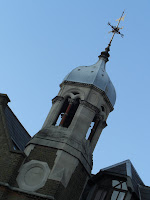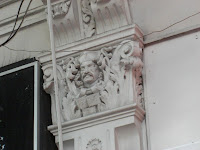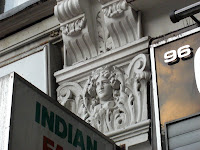I'm using this month to draw together threads from having done this blog over a sustained period of time (a year) and really getting into the habit of seeing things and taking the pictures necessary.
However, it is clear to me that this has become more then just a photo insight into the local area. What I have tried to convey and distill into this webpage is a sense of the area.
It has been described as quirky, interesting, historical and indeed boring. I hope it covers all of those things - some of it is superficial in as far as it simply gets to what a photograph can capture - some becomes more of a historical contextual insight.
The coverage of Kilburn has been the most interesting for me - not the most historical place and yet in many ways the area of the constituency with the most to say:
http://474towin.blogspot.com/2008/10/kilburn-guthrum-dane-and-878.html
http://474towin.blogspot.com/2008/05/long-live-fresh-fishmongers-shop.html
http://474towin.blogspot.com/2008/08/william-friese-greene-kilburn-as-home.html
But it is also the case that there is so much to draw out in, for example, Hampstead that it's fun to draw out the places that are less than obvious:
http://474towin.blogspot.com/2008/05/another-underground-wwii-tube-bunker-on.html
http://474towin.blogspot.com/2008/05/at-home-with-george-orwell.html
http://474towin.blogspot.com/2008/02/hampstead-brewery-bring-it-back.html
More than anything else I have sought to give an insight into what I think is all around us and so totally affects our area. On Kilburn itself I have more aggressive in asserting that this is a much better and more interesting place than it is treated. Because other parts of town have a higher property value and a greater economic expectation, so Kilburn is often down-graded in the way it is treated. So too the boundary of the High Road has led to a division in the way it is considered. In fact the history, the vibrancy and the diversity all demand a greater level of attention - not least because the rewards for getting this right would be so high and visible.
With regards to Hampstead, Belsize and Frognal I have come to understand something else. I serve on the Hampstead Heath Management Committee (Corporation of London) and now know that for something such as the Heath to exist and thrive it has had to be managed. At the moment we are engaged on a process of naturalising some of the areas around Parliament Hill and making sure they have less of a feel of a park and more like a wilder, rustic heath. So it is with the architecture - Flask Walk, Englands Lane and indeed The Pavement (West Hampstead) need to be nourished, assisted and where appropriate nudged. For these areas to be special, look special and remain special they need a real understanding of the place.
It's an old carnard that someting with no past has no future - but increasingly as I look around me I find it to be a simple fact of life. Hopefully this blog, quirky, boring or interesting has developed the process of tapping into that notion and articulating it for all to see - residents, opinion formers and decision makers alike.
Ed Fordham
 This blog started on the back of a trip to Sierra Leone as part of the Westminster Foundation for Democracy (WFD) - and earlier this year I went back to West Africa to The Gambia.
This blog started on the back of a trip to Sierra Leone as part of the Westminster Foundation for Democracy (WFD) - and earlier this year I went back to West Africa to The Gambia.












































